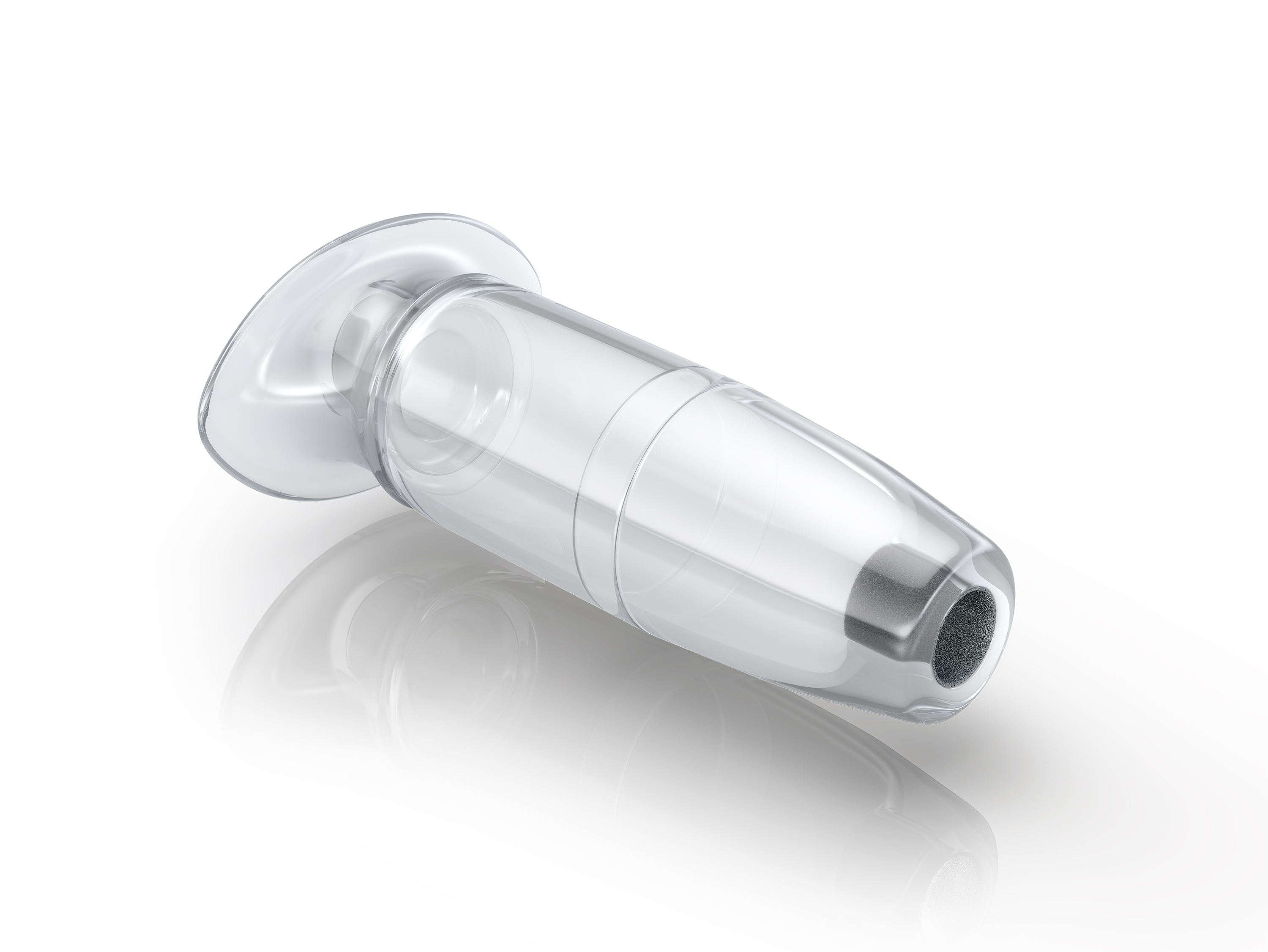 |
|
The Susvimo implant for nAMD achieved similar BCVA outcomes as monthly ranibizumab at two years in the extended Phase III trial. Click image to enlarge. |
Intravitreal anti-VEGF injections have long been the standard treatment for wet age-related macular degeneration (AMD); however, efforts to provide these patients with a less invasive solution have been ramping up in recent years. In October 2021, the FDA approved the first drug-eluting implant, Susvimo (Genentech/Roche), formerly known as the Port Delivery System (PDS). This innovative device releases 100mg/ml ranibizumab into the vitreous in a controlled manner over a six-month period. While currently off the market for a redesign following concerns regarding the device’s potential for leakage, it’s only a matter of time before this treatment option again becomes available to patients, underscoring the importance of research on its long-term effects.
Fortunately, positive two-year results from the Archway Phase III clinical trial were recently released, designed to evaluate the implant’s prolonged treatment efficacy and safety in patients with neovascular AMD (nAMD). The trial results showed that, compared with monthly ranibizumab injections, the delivery system demonstrated noninferiority in efficacy through two years. Additionally, 95% of patients in the trial needed no supplemental ranibizumab treatment in each of the four total refill-exchange intervals.
Patients included in the study (n=415) were 50 or older, diagnosed with nAMD and had a documented response to anti-VEGF treatment. The cohort was randomized 3:2 to receive either the PDS (with refill exchanges every 24 weeks) or intravitreal ranibizumab 0.5mg injections every four weeks. The main outcome measure was change in BCVA Early Treatment Diabetic Retinopathy Study (ETDRS) letter score.
The difference in adjusted mean change in BCVA score averaged over weeks 60 and 64 and weeks 88 and 92 was +0.4 and -0.6 ETDRS letters for the PDS group vs. the monthly injection group, respectively, demonstrating noninferiority of the implant. The trial results also showed no difference in anatomical outcomes between the groups through week 96.
Another positive finding from the extended trial: “Serum ranibizumab sampling showed that the PDS continuously released ranibizumab over the 24-week refill-exchange interval and ranibizumab serum concentrations were within the range experienced with monthly ranibizumab,” the researchers reported in their paper, published in Ophthalmology.
Ocular adverse events were reported in 23.8% of PDS and 10.2% of monthly ranibizumab patients, the most common event being cataract for both groups. For the PDS group, the following events were observed in patients: conjunctival erosions (4%), conjunctival retractions (2.4%), endophthalmitis (1.6%) and implant dislocations (1.6%). The researchers noted that adverse events were generally manageable, and although they were more common in patients with the PDS, 93% reported that they preferred this treatment modality over monthly injections.
The team concluded in their study that “the Archway end-of-study results with PDS Q24W were consistent with the primary analysis, with vision and anatomic outcomes maintained and comparable with intravitreal ranibizumab 0.5mg Q4W injections through two years.”
Once the device is back on the market, you and your patients can look forward to having a less invasive alternative to frequent injections for nAMD treatment.
Regillo C, Berger B, Brooks L, et al. Archway phase 3 trial of the port delivery system with ranibizumab for neovascular age-related macular degeneration 2-year results. Ophthalmology. March 2, 2023. [Epub ahead of print]. |

